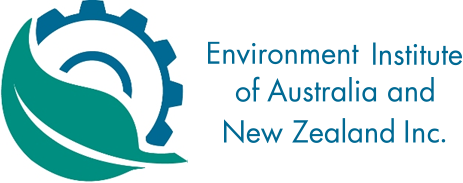-
Member Login
- Home
- About
- Institute Groups
- Australian Divisions
- New Zealand Chapter
- Special Interest Sections
- Communities of Practice
- Membership
- Events
- News & Publications
- Institute Programs
- Resources
- Jobs Board
- Contact Us
- Site Info
The day after – Sea Level Rise Conference
It is the day after our second 20-year flood event in one year (almost to the day!) here in Porirua. The rainfall pattern – duration, locations – was different, but the result was the same: the CBD awash with ‘road rivers’ and shopping precinct lakes; any dip in suburban roads filled with water too deep for vehicles to negotiate, and the same properties inundated with water and mud. And the question, why did we get two 20-year floods within a year? Apart from the difficulty of explaining statistical terminology or finding a better way of expressing it, it’s hard to ignore the none-to-subtle changes that climate change is already expressing itself in the world, even here in Porirua.
I was at the New Zealand Sea Level Rise Conference in Auckland a few weeks ago (8 April) where we heard about the latest predictions for seal level rise and the science behind them, we also looked at some of the structural and institutional implications for New Zealand. The following week the New Zealand Royal Society released its report on the implications of these predictions for NZ. Read it here →
All of the conference presentations can be viewed here →
For me there were two presenters who provided the significant background to, and most recent information on, sea level rise predictions: Prof Jonathan Bamber from the University of Bristol and President Elect of the European GeoSciences Union and Prof. Tim Naish the Director of Antarctic Research Centre, Victoria University of Wellington, NZ.
Prof Jonathan Bamber made raised these points:
- Satellite telemetry has now given the most accurate assessment of SLR as an average of 3.3mm/year +/- 0.4mm. This latest rate means that the rate of rise has doubled in the last 20 years
- Thermal expansion of the oceans accounts for only a third of SLR. The rest is from the melting of ice sheets and glaciers
- Glaciers have been the major contributor to SLR in the past 20 years, but ice sheet contribution has been steadily increasing
- 80-90% of global freshwater is frozen in Greenland and Antarctica. If these were to melt, their contribution to SLR would be:
| Greenland | 7.3m |
| West Antarctica | 4.0m |
| East Antarctica | 53.0m |
| Total | 64.3m |
- Western Antarctica is considered the 'soft underbelly' of Antarctica and SLR. NZ should be concerned about what happens to the Western Antarctica ice shelf, then East Antarctica, but not Greenland. The Ross Ice Shelf is grounded and stopping glaciers coming to the sea. If the Shelf melts, then the glaciers will stream off, and result in rapid SLR
- Ice shelf melt is now more important as a contributor to SLR than ocean thermal expansion
- The latest prediction for the increasing upper limit of SLR is now 1.7m by 2100.
Like me, you might find that last line quite sobering.
Then Prof. Tim Naish the Director of Antarctic Research Centre, Victoria University of Wellington, NZ discussed the following:
- Climate and SLR field is moving very fast, but continues to increase the upper level of SLR
- There is now an emphasis on paleoclimate studies because we (humans) have not experienced the current levels (and still climbing) of CO2 in the last 3 million years
- It is definite that there will be a 20-30cm SLR by 2050, but less certainty about an upper limit
- There is a possibility that regardless of what we do now, we are already committed to an eventual rise of 20m
- Small changes in temperature will result in big changes in Antarctica. Paleoclimate work shows that the melting of Antarctica is capable of up to 4m/yr SLR
- Note, however, that New Zealand gets 10% more sea level rise than the global average.
The Royal Society of New Zealand has now released its report on the implications for New Zealand of these latest figures on Climate Change and Sea Level Rise.
The full report and a four page summary are available at the Royal Society here →
It’s worth a read and serious consideration of our current attitudes, practices, advice and provisions within the work we do as environmental practitioners.
We acknowledge and value the rights and interests of Indigenous Peoples in the protection and management of environmental values through their involvement in decisions and processes, and the application of traditional Indigenous knowledge.

